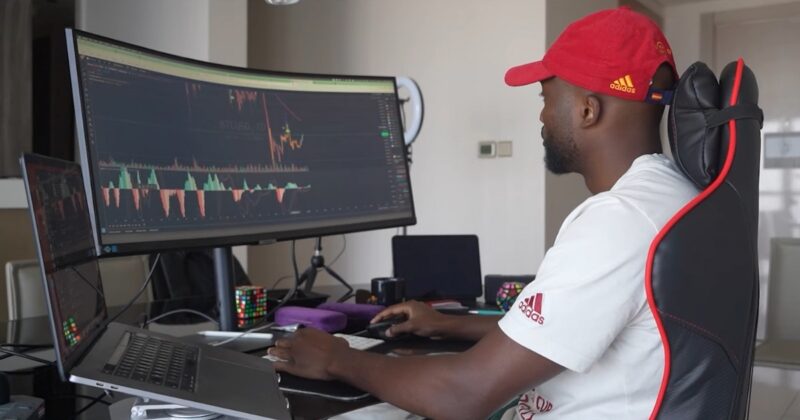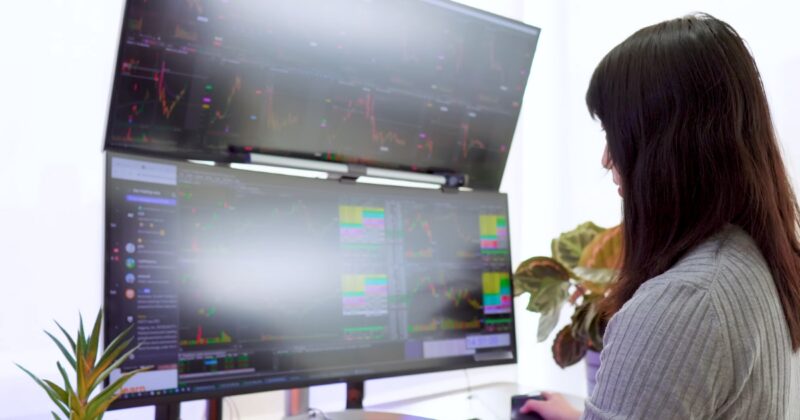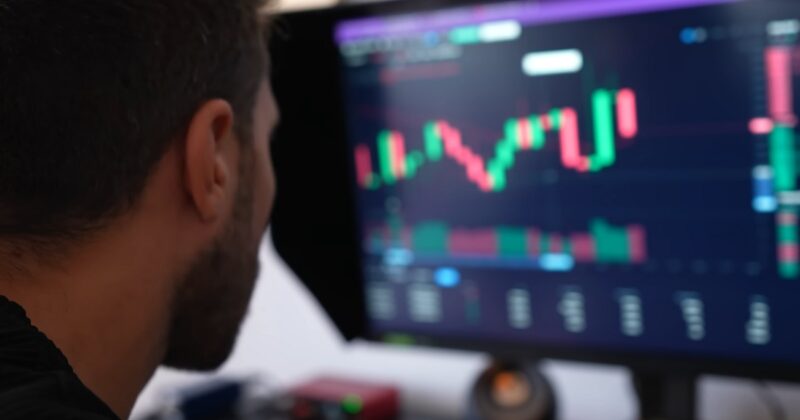P2P trading, as a term, refers to the action of buying and selling assets between individuals without a platform, i.e., central authority between them. Also, you need to know that P2P is short for peer-to-peer trading. This method is commonly used for cryptocurrency trading, while it’s also available for various assets and currencies.
The process is simple: You buy here a crypto, then follow its performance until it’s the right time to sell it. However, you don’t use any exchanges or trading platforms; you can contact the buyer directly. That way, you both complete a P2P transaction with no central authority involved.
To estimate how safe this method is, you need to know some things, such as:
- P2P is based on a decentralized approach
- You’re connected directly to the buyers
- There are platforms like social media for P2P traders
- Some platforms charge fees when completing the transaction between the peers
People choose this method as it’s more flexible compared to traditional trading platforms. It’s a great option for crypto trading, but it’s often a target to cyber criminals and scammers. So, it’s important to protect yourself from such actions.
That’s why we’ll share some tips on how to do that, ensuring both you and your assets are completely safe.
1. Choose a Reputable Platform

Don’t use suspicious P2P trading platforms. Always check on their reputation, reviews, and availability. Make sure you download the client only from trusted sources. We suggest you test a few platforms until you’re able to estimate the reputability. That way, you protect yourself from trading scams.
2. Verify Counterparty’s Identity
The worst decision you can make is to trade with someone you know nothing about. Make sure their profile is verified. Check on their background, if possible, so you can know who you’re trading with and what kind of person they are.
You can analyze their past trading and see if they had some disputes or suspicious activities. That way, you can be wary of offers that are a great deal. Surely, keeping the conversation on the platform ensures you’re protected by their policies and rules.
3. Understand How the Platform Works
Carefully read and understand the platform’s terms of service. Take enough time to understand how it works and what’s considered suspicious behavior. Adapt to the rules so you can have a comfortable and pleasant experience while P2P trading.
4. Use Secure Payment Methods
We suggest you always use reputable and well-known payment methods. Make sure you keep the transaction on the P2P platform. Each time you complete a transaction outside of it, the terms of service don’t apply, and you aren’t protected. So, for the sake of your security, avoid accepting transfers outside of the platform’s system.
5. Double-Check Transaction Details
It’s easy to make a mistake while providing the transaction details. Also, you must double or triple-check when sending money to make sure you’re sending it to the right recipient.
Before you approve the transaction, check on the personal information, amount, address, and payment methods. That way, you ensure you’re always on the right side, no matter the amount you’re planning to transfer.
Remember, P2P trading comes with several risks, but our tips will help you minimize them while trading with confidence.
Advantages of P2P Trading Platforms

Even though we’re mentioning security tips and concerns, we must say that P2P trading is not as bad as it seems for now. Even if you have some experience, you still need to be careful with the upcoming activities.
That way, you can experience the advantages like:
Cost Efficiency
P2P platforms are, in general, pretty cost-effective. They charge very low fees compared to the traditional trading platforms. That way, you have the potential to maximize the returns while being profitable.
Flexibility and Control
With P2P trading services, you have greater control over direct transactions. You can negotiate the conditions, set the prices, and choose a preferred payment method, especially when you’re into crypto trading.
Global Accessibility
When choosing a P2P platform, you can complete transactions worldwide, no matter the location and financial restrictions. This can be particularly beneficial for users in regions with limited access to traditional financial services.
Security
Most of the commercial and verified P2P platforms are completely secure to use. That way, you have control over the transaction, transferred amounts, and recipient in general. As a result, you reduce the risk of fraud for both buyer and seller.
P2P or Not P2P?

This verdict is pretty difficult to define because there are so many factors to consider. While we mentioned plenty of P2P advantages, as well as a few security tips, it’s great to know that:
- P2P platforms come with lower fees compared to traditional transfers
- The user has complete control over the transaction
- The platforms are available worldwide
- A decentralized approach to financial working
Surely, you’re aware of the security concerns related to scams and fraud. But you also need to know how to choose a nice and secure platform to verify your transfers.
We can say that the decision on P2P or not P2P depends on many factors. Still, we can summarize it in two simple statements:
- People who prioritize low fees, financial control, and accessibility find P2P platforms better.
- People who prefer the traditional way are considered no P2P.
Ultimately, the choice between P2P and non-P2P depends on the specific context and individual preferences.
Conclusion
While the decision of whether to use P2P trading platforms or not is not easy, the above-mentioned factors can indeed help you make the right choice. Remember, you’re the one who should have complete financial control over your money.
As we said, the choice depends on personal preferences, as well as location, goals, and financial power. Remember, it’s your money, and you can spend and transfer it the way you prefer most.
However, when it comes to direct transfers between you and the recipient, it seems like the P2P platforms are the ultimate choice for both sides.






